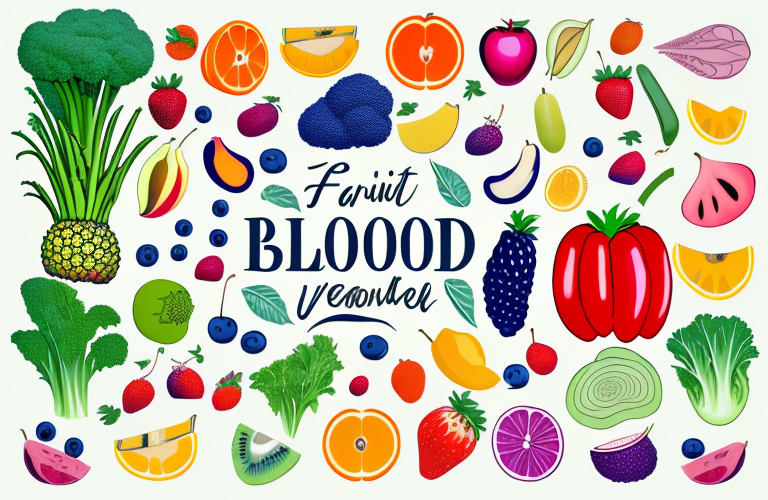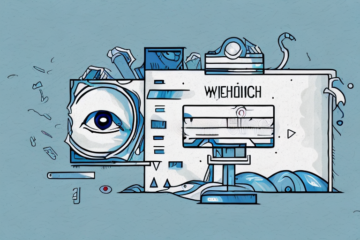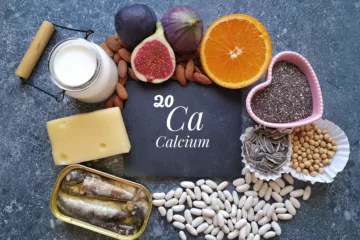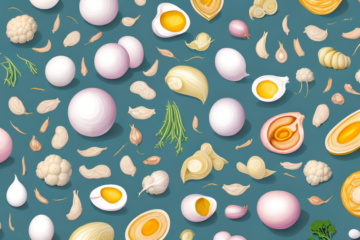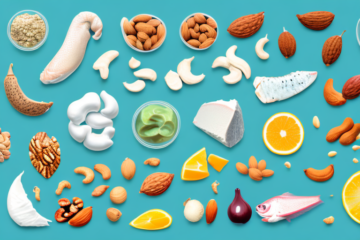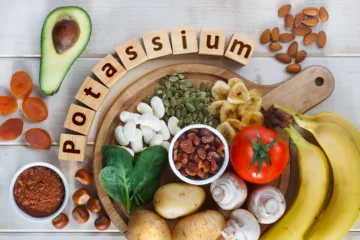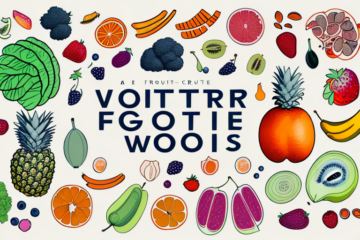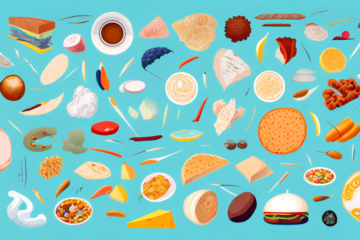High blood pressure, also known as hypertension, is a serious health concern that affects millions of people worldwide. High blood pressure can lead to a wide range of complications such as stroke, heart disease, and kidney damage. While medication can help to control blood pressure levels, an excellent way to reduce blood pressure levels naturally is through dietary changes. There are certain foods that can help to lower high blood pressure. In this article, we will discuss the top 27 foods that can help to lower blood pressure and enable you to live a healthier life.
Why High Blood Pressure is a Health Concern
High blood pressure occurs when the force of blood against the walls of your arteries is consistently too high. This can damage the delicate tissues in your arteries and cause a range of health problems. High blood pressure is often called a “silent killer” as it does not have any symptoms until it is too late. High blood pressure is the leading cause of heart disease, stroke, and kidney disease. By managing your blood pressure, you can dramatically reduce your risk of these serious conditions.
One of the reasons high blood pressure is so dangerous is that it can lead to aneurysms. An aneurysm is a bulge in the wall of an artery that can burst and cause internal bleeding. This can be life-threatening and requires immediate medical attention. High blood pressure can also cause damage to the blood vessels in your eyes, leading to vision problems or even blindness.
It is important to note that high blood pressure can be managed through lifestyle changes and medication. Eating a healthy diet, exercising regularly, and reducing stress can all help to lower your blood pressure. If you have been diagnosed with high blood pressure, it is important to work with your healthcare provider to develop a plan to manage it and reduce your risk of serious health complications.
Understanding Blood Pressure Levels
Blood pressure is measured in millimeters of mercury (mmHg) and is given in two numbers. The first number represents the pressure when your heart beats, and the second number represents the pressure when your heart rests between beats. The ideal blood pressure is considered to be around 120/80 mmHg. High blood pressure is when your blood pressure is consistently above 130/80 mmHg. If you have high blood pressure, it is essential to consult your doctor and make necessary lifestyle modifications.
Some of the lifestyle modifications that can help manage high blood pressure include regular exercise, maintaining a healthy weight, reducing salt intake, quitting smoking, and limiting alcohol consumption. In some cases, medication may also be prescribed by a doctor to help lower blood pressure. It is important to monitor your blood pressure regularly and follow your doctor’s recommendations to prevent complications such as heart disease, stroke, and kidney damage.
How Diet Affects Blood Pressure
Diet plays a significant role in our blood pressure levels. A healthy and balanced diet that is rich in essential nutrients such as potassium, magnesium, and fiber can help to lower blood pressure. On the other hand, a diet that is high in saturated and trans fats, sodium, and added sugars can increase blood pressure.
One of the key ways that a healthy diet can help to lower blood pressure is by reducing inflammation in the body. Inflammation can cause damage to blood vessels and lead to high blood pressure. Eating a diet that is rich in anti-inflammatory foods such as fruits, vegetables, whole grains, and lean proteins can help to reduce inflammation and lower blood pressure.
In addition to diet, regular exercise is also important for maintaining healthy blood pressure levels. Exercise helps to strengthen the heart and improve blood flow, which can help to lower blood pressure. Combining a healthy diet with regular exercise can have a powerful impact on blood pressure levels and overall cardiovascular health.
The Benefits of Eating Foods That Lower Blood Pressure
Eating foods that lower blood pressure is an effortless and effective way to reduce high blood pressure levels. Eating a healthy diet significantly lowers the risk of developing heart disease, stroke, and other related diseases.
In addition to reducing the risk of heart disease and stroke, eating foods that lower blood pressure can also improve overall health and well-being. These foods are typically high in nutrients such as potassium, magnesium, and fiber, which are essential for maintaining a healthy body. Additionally, incorporating these foods into your diet can help to reduce inflammation, improve digestion, and boost energy levels.
Leafy Greens that Help Lower Blood Pressure
Leafy greens like spinach, kale, and collard greens are full of essential nutrients and antioxidants that protect the heart. They are also a great source of nitrates that help to relax blood vessels and lower high blood pressure. Additionally, they are low in calories and high in fiber, which helps to control blood sugar levels.
Another leafy green that can help lower blood pressure is Swiss chard. It contains potassium, which helps to regulate blood pressure by counteracting the effects of sodium in the diet. Swiss chard is also rich in magnesium, which helps to relax blood vessels and improve blood flow.
Adding leafy greens to your diet can also have other health benefits. For example, they are a good source of vitamin K, which is important for bone health. They also contain folate, which is essential for healthy fetal development during pregnancy. So, incorporating leafy greens into your meals can have a positive impact on your overall health and well-being.
Fruits That Naturally Lower Blood Pressure
Fruits such as berries, bananas, and watermelon are rich in potassium, which helps to lower blood pressure levels. Similarly, citrus fruits like oranges and grapefruits are also high in antioxidants that promote healthy blood pressure.
In addition to these fruits, studies have shown that consuming pomegranate juice can also help to lower blood pressure. Pomegranates are high in polyphenols, which are natural compounds that have been found to improve blood flow and reduce inflammation in the body. Drinking a glass of pomegranate juice daily can be a tasty and effective way to support healthy blood pressure levels.
How Nuts and Seeds Can Help Lower Blood Pressure
Nuts and seeds such as walnuts, almonds, pumpkin seeds, and chia seeds are excellent sources of healthy fats, which promote healthy blood pressure levels. They are also rich in fiber and minerals such as potassium and magnesium, which are essential for reducing high blood pressure.
In addition to their nutritional benefits, nuts and seeds are also easy to incorporate into your diet. You can snack on them throughout the day, add them to salads or smoothies, or use them as a topping for yogurt or oatmeal.
Research has shown that incorporating nuts and seeds into your diet can have a significant impact on your blood pressure levels. In fact, a study published in the American Journal of Clinical Nutrition found that consuming just one serving of nuts per day was associated with a 4.2 mmHg reduction in systolic blood pressure.
Spices and Herbs that Play a Role in Reducing Blood Pressure
Herbs and spices such as garlic, ginger, turmeric, and cinnamon have potent anti-inflammatory and antioxidant properties that help to lower blood pressure. They work by relaxing blood vessels and improving blood flow. Adding these herbs and spices to your meals is an easy way to reduce your blood pressure naturally.
In addition to the herbs and spices mentioned above, studies have shown that hibiscus tea may also have a positive effect on blood pressure. Hibiscus contains compounds that act as natural ACE inhibitors, which help to relax blood vessels and lower blood pressure. Drinking hibiscus tea regularly may be a simple and effective way to manage hypertension.
The Role of Whole Grains in Maintaining Healthy Blood Pressure Levels
Whole grains such as brown rice, quinoa, and oats are rich in fiber, which can help to reduce blood pressure. They are also a low-fat source of carbohydrates that can help to control blood sugar levels. A diet rich in whole grains has been linked to a lower risk of heart disease and hypertension.
In addition to their fiber content, whole grains also contain important nutrients such as magnesium, potassium, and selenium. These minerals have been shown to have a positive effect on blood pressure levels. Magnesium, for example, helps to relax blood vessels, which can lead to lower blood pressure.
It’s important to note that not all products labeled as “whole grain” are created equal. Look for products that list a whole grain as the first ingredient and avoid those that contain added sugars or refined grains. Incorporating a variety of whole grains into your diet, such as barley, bulgur, and farro, can also provide a range of health benefits.
How Legumes Can Help Lower Blood Pressure
Legumes such as lentils, chickpeas, and kidney beans are a fantastic source of plant-based protein, fiber, and minerals like potassium and magnesium. They are also low in fat and calories, which makes them an ideal food for reducing high blood pressure.
Studies have shown that consuming legumes regularly can help lower blood pressure levels. This is because the high fiber content in legumes helps to reduce the absorption of cholesterol and other harmful substances in the body, which can contribute to high blood pressure.
In addition to their blood pressure-lowering benefits, legumes are also a great food for maintaining a healthy weight. The high fiber and protein content in legumes helps to keep you feeling full for longer periods of time, which can prevent overeating and promote weight loss.
Healthy Fats That Help Lower Blood Pressure
Healthy fats such as olive oil, avocado, and fatty fish like salmon, sardines, and mackerel contain omega-3 fatty acids, which are crucial for reducing inflammation and maintaining healthy blood pressure levels.
In addition to these healthy fats, nuts such as almonds, walnuts, and pistachios are also great sources of monounsaturated and polyunsaturated fats that can help lower blood pressure. These nuts are also rich in fiber, magnesium, and potassium, which are important nutrients for maintaining heart health. Incorporating a handful of nuts into your daily diet can be a simple and delicious way to improve your heart health.
Dairy Foods That Have a Positive Impact on Blood Pressure
Low-fat dairy products like skim milk, yogurt, and cheese are excellent sources of calcium, which is essential for healthy blood pressure levels. They are also a good source of protein and vitamins that contribute to overall good health.
In addition to calcium, low-fat dairy products also contain potassium, which is another important nutrient for maintaining healthy blood pressure levels. Potassium helps to counteract the effects of sodium in the diet, which can contribute to high blood pressure.
It’s important to note that not all dairy products are created equal when it comes to blood pressure. Full-fat dairy products, such as whole milk and regular cheese, can actually have a negative impact on blood pressure due to their higher saturated fat content. It’s best to stick to low-fat options for the most benefit.
Fish and Seafood that are Good for Your Heart and Your BP
Fish and seafood, especially fatty fish like salmon, sardines, and mackerel, are excellent sources of omega-3 fatty acids, which promote healthy blood pressure. They also contain high levels of protein and other essential nutrients that are critical for heart health.
In addition to omega-3 fatty acids, fish and seafood are also rich in minerals such as potassium, magnesium, and calcium, which are important for maintaining healthy blood pressure levels. These minerals work together to regulate fluid balance in the body and prevent hypertension.
It is important to note that not all fish and seafood are created equal when it comes to heart health. Some varieties, such as shrimp and lobster, are high in cholesterol and should be consumed in moderation. Additionally, it is recommended to choose wild-caught fish over farmed fish, as they tend to have higher levels of omega-3s and lower levels of contaminants.
Foods to Avoid for Healthy Blood Pressure
There are certain foods that can increase blood pressure levels and increase the risk of heart disease. These foods include processed foods, fast food, sugary drinks, and foods high in saturated and trans fats. It is essential to avoid these foods and choose healthier options.
In addition to the aforementioned foods, it is also important to limit your intake of salt and alcohol. Consuming too much salt can cause your body to retain water, which can lead to high blood pressure. Similarly, drinking too much alcohol can also increase blood pressure levels and damage your heart over time.
On the other hand, there are many foods that can help lower blood pressure and promote heart health. These include fruits and vegetables, whole grains, lean proteins, and foods rich in potassium, magnesium, and calcium. Incorporating these foods into your diet can help you maintain healthy blood pressure levels and reduce your risk of heart disease.
Tips for Incorporating BP-Lowering Foods into Your Diet
It is easy to incorporate blood pressure-lowering foods into your daily diet. You can start by eating a wide variety of fruits, vegetables, whole grains, lean proteins, and healthy fats. Consuming these foods regularly can significantly lower your risk of high blood pressure and related diseases.
In addition to the above-mentioned foods, you can also include foods that are rich in potassium, such as bananas, avocados, and sweet potatoes. Potassium helps to regulate blood pressure by counteracting the effects of sodium in the body. You can also add garlic to your meals, as it has been shown to have a positive effect on blood pressure levels.
It is important to note that incorporating these foods into your diet is just one aspect of maintaining healthy blood pressure levels. Regular exercise, stress management, and limiting alcohol and tobacco consumption are also important factors in maintaining a healthy blood pressure.
Recipes Featuring BP-Lowering Ingredients
There are plenty of delicious recipes that feature blood pressure-lowering ingredients. From salads to smoothies, to main dishes, there is something for everyone. Browse online for recipes that appeal to your taste buds and include healthy ingredients that help to reduce high blood pressure.
Some examples of blood pressure-lowering ingredients that you can incorporate into your meals include leafy greens like spinach and kale, berries such as blueberries and strawberries, and nuts like almonds and walnuts. These ingredients are not only tasty but also packed with nutrients that can help to lower your blood pressure and improve your overall health.
How to Create a Balanced Meal Plan for Optimal Heart Health
Creating a balanced meal plan for optimal heart health involves eating a variety of nutrient-dense foods that are rich in essential vitamins and minerals. It is important to consume a diet that is low in saturated and trans fats and high in fiber, lean protein, and healthy fats. Speak with a nutritionist or dietitian who can help you create a healthy and balanced meal plan.
In addition to a balanced diet, regular physical activity is also important for maintaining heart health. Aim for at least 30 minutes of moderate-intensity exercise, such as brisk walking or cycling, on most days of the week. This can help improve cardiovascular health, lower blood pressure, and reduce the risk of heart disease. Remember to always consult with your healthcare provider before starting a new exercise routine.
Additional Lifestyle Changes to Support Healthy BP
In addition to eating a healthy diet, it is essential to make certain lifestyle modifications that can further support healthy blood pressure levels. These modifications include exercising regularly, reducing stress, getting enough sleep, and limiting alcohol and caffeine intake.
Regular physical activity is one of the most effective ways to lower blood pressure. Aim for at least 30 minutes of moderate-intensity exercise, such as brisk walking, cycling, or swimming, most days of the week. Additionally, practicing stress-reducing techniques like meditation, deep breathing, or yoga can help lower blood pressure. Getting enough sleep is also crucial for maintaining healthy blood pressure levels, as sleep deprivation can increase the risk of hypertension. Finally, limiting alcohol and caffeine intake can also help lower blood pressure, as excessive consumption of these substances can raise blood pressure levels.
The Link Between Exercise and Lowering High BP
Physical activity is an important aspect of maintaining healthy blood pressure levels. Exercise can help to reduce high blood pressure by reducing the risk of heart disease and improving blood flow. Engage in moderate-intensity physical activity for 30 minutes for at least five days a week.
In conclusion, smart dietary choices are one of the most effective ways to lower high blood pressure levels. Incorporating the 27 foods mentioned above into your regular diet can go a long way in reducing your risk of hypertension and related health issues. Consult a healthcare professional to create a plan for achieving a healthy blood pressure range that is right for you.
Aside from reducing high blood pressure, regular exercise has numerous other health benefits. It can help to improve overall cardiovascular health, increase muscle strength and endurance, and reduce the risk of chronic diseases such as diabetes and obesity. Additionally, exercise has been shown to have positive effects on mental health, reducing symptoms of anxiety and depression.
It is important to note that exercise does not have to be strenuous or time-consuming to be effective. Simple activities such as walking, gardening, or swimming can provide significant health benefits. It is also important to find activities that you enjoy and can incorporate into your daily routine to make exercise a sustainable habit.

